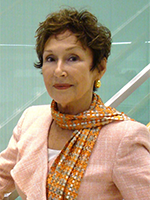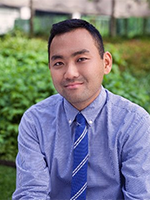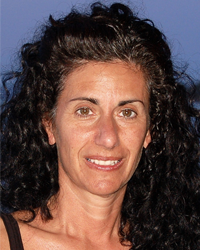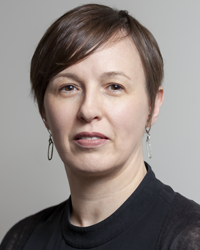With 58 million people ages 65 and older in the United States today—and 1.4 billion worldwide by 2030—the idea that they all belong in the same class, need the same equipment, or enjoy the same pace when exercising is simply absurd. Yet we persist with labels like “senior yoga” and “silver strength.”
These age-based titles often reinforce outdated notions of fragility and incapability. Our systems are designed to help—but they’re built on the faulty foundation of age-based assumptions. And that’s a form of ageism.
Last fall, a small group of dedicated health and fitness professionals gathered for a retreat hosted by Second Act Fit Pros—a podcast and community committed to supporting health professionals who serve the older adult population. The goal was to engage in honest conversations, share expertise, and explore how to better meet the needs of older adults through more inclusive, thoughtful programming.
One standout topic from the retreat was “Redefining Old: Celebrating Experience Over Age.” During this discussion, participants explored how ageism shows up in physical activity programming from class titles like “Chair Yoga for Seniors” and “Boomer Bootcamp,” to the assumption that all older adults prefer gentle, low-impact, or seated workouts.
These offerings often reflect more about outdated stereotypes than actual needs. Determined to challenge this pattern, the group brought the issue to the broader Second Act Fit Pros online community and launched a task force to advocate for ability-based, rather than age-based, programming.
‘The assumption seems to be that I should not want to regain full range of motion.’
Powerful testimonials and stories soon followed, highlighting the real-world impact of ageist assumptions in physical activity spaces.
Cheryl Whitelaw, a functional movement specialist and Feldenkrais practitioner in Alberta, Canada, received this feedback from a class participant in response to a class called “Silver Seated Yoga”:
“The name of the class not only assumes that older persons will want to attend a seated class but assumes that only older people have silver hair and that all older people have silver hair. Like many generalizations, they are too often wrong.
“Additional assumptions include all older women lack strength, have random hot flashes and numerous co-morbidities from which there is no return. Too often, we are herded into homogeneous groups. I appreciate when there are people of several levels in the class. I find I learn moves from everyone in the class, not just the leader. It also triggers my competitive drive.
“On numerous occasions fitness professionals have made assumptions based on my age. The assumption seems to be that I should not want to regain full range of motion, that, given my age, I should be happy with the status quo. I walk to my classes when I can and when I do, I hear a patronizing ‘Good for you!’ Why wouldn’t I?
“When I seek classes to prevent advancement of early limitations, I heard that I really wasn’t at the same level as the others.”
That quote, and others like it, brought clarity. It exposed how deeply rooted ageist beliefs can limit older adults’ potential and revealed the subtle but harmful ways ageism shapes physical activity programming, often lowering expectations and reinforcing stereotypes rather than fostering autonomy and capability.
The Problem: Generalizing by Age Hurts Everyone
As Becca Levy outlines in Breaking the Age Code, internalized ageism leads to worse health outcomes and even reduced lifespan—by as much as 7.5 years. When people are told (explicitly or subtly) that they’re too old for a challenging movement, they may begin to believe it.
This matters. It’s not just about class titles—it’s about the subtle messages we send. And it’s about who we exclude from movement experiences because of our language and assumptions.
The broader Second Act Fit Pros community of health and wellness professionals must challenge these norms.
That includes running ability-based programming like StrongerLife based in Lexington, Ken., which asks new members about their capacity, not their age:
- Can you walk for 30 minutes without stopping?
- Can you get to and from the floor without using furniture?
Rock Steady Boxing says that classes are organized based on Parkinson’s symptoms, not birthdate—offering scaled classes for participants of all ages.
‘Stop naming classes by age and start describing them by what participants will do and experience.’
Laura Dow of Arlington, Vir., created a class called “Yoga for the Stiff and Terrified.” This includes anyone who fits the description without any call out to age. Class titles have evolved, too. “Gentle Yoga,” “Balance & Beyond” and “Mix It Up,” communicate challenge level, pace and tone—without invoking age-based assumptions. Coaches like Jojo McDuffie work in spaces where people of all ages and abilities train together, with appropriate modifications, not labels. This shift isn’t about pretending age doesn’t matter, it’s about focusing on what does matter: function, confidence and connection.
What Comes Next: Creating a Movement Culture That Empowers
Let’s lay the foundation for a better system. We need to:
- Stop naming classes by age and start describing them by what participants will do and experience.
- Train instructors to recognize ability-based progression, to build in modifications, and to remove patronizing language from their vocabulary.
- Evaluate new members with simple functional benchmarks to help guide them into the right starting point—not the “senior” class by default.
- Create intergenerational spaces where young and old can learn from one another, challenge assumptions, and build solidarity through shared movement.
Cheryl Whitelaw advocates for “challenge by choice.” That means letting people adjust intensity, opt in or opt out, use tools or rests as needed—not because of how old they are, but because they are the experts on their own bodies.
A Culture Shift That Changes Lives
When we design from ability, not age, we do more than make better classes—we invite people into a relationship with movement that changes their identity.
Misty Wright, a Rock Steady Boxing coach, says it best: “Challenging perceived limits helps them mentally, by instilling confidence in their abilities. When a client accomplishes some new move like rock climbing, or finishing a 5K run, their entire world improves.”
Movement is more than fitness. It’s about agency. Identity. Dignity. And when we stop assuming what people can’t do—and start supporting them to explore what they can do—we create the conditions for growth.
We’ve seen firsthand the harm of age-based assumptions—and the power of flipping the script. That change starts with how we design, name, and lead physical activity experiences. And it ripples outward.
When we commit to ability-first programming:
- Older adults gain strength, confidence and autonomy.
- Younger people access modified options without stigma.
- Communities experience deeper inclusion and richer connections.
- The fitness industry models anti-ageist, person-centered care.
This isn’t just an evolution in programming. It’s a revolution in perspective.
Let’s build spaces where every person, at every age, can move with purpose, pride and possibility.
Erin Eleuterio is the founder of Second Act Fit Pros podcast and community. Holly Benson is a fitness industry veteran, senior fitness peer educator and founder of Moving Strong Medical Exercise, LLC. Jojo McDuffie is a veteran strength coach, doctoral student and an advocate for people living with Parkinson’s disease. Patricia Linderman of FierceAfter45 is a health coach and Functional Aging Specialist. Laura Dow is the creator of Stiff To Fit, a company helping older adults move better and stay active as they age. Cheryl Whitelaw is CEO of Peace and Power Movement Services is a functional movement specialist. Jennifer Winters, PhD, has a doctorate in Gerontology, is a geriatric nurse practitioner and an educator. Lynn Jordan is the founder of Joyful Boogie and a certified Hatha Yoga instructor, Kripalu Let Your Yoga Dance instructor, and GROOVE Method facilitator.
Photo credit: Shutterstock/BearFotos









